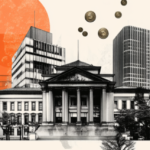The US dollar’s weakening trend in 2025, driven by the Trump administration’s aggressive fiscal policies and trade tensions, has shifted the global investment landscape. For US investors, that means recalibrating strategies on how and where to invest both domestically and across global markets.
The dollar drop squeezes US purchasing power overseas but also raises clear signals to diversify or get left behind. Meanwhile, the Chinese renminbi (RMB) remains relatively steady, as recent monetary easing by the People’s Bank of China aim to stimulate growth while maintaining currency stability.
Why does this matter? Because macro capital movements follow currency trade fluctuations, and smart real estate investors watch these flows closely.
The cooling US real estate market
The US housing market is on slow grounds. The home price trajectory slowed considerably with June 2025 annual price growth at just 1.3%, marking the slowest increase in two years.
Sun Belt cities like Dallas and Austin are winning the popularity due to job growth and migration. Meanwhile dense coastal hubs like New York and San Francisco are feeling the pinch, as affordability is tightening and remote work continues to hollow out demand.
Renters are tightening their budgets too. Affordability pressures are mounting as 52% of renters spent a third of their disposable income towards rent. This financial strain is causing many renters to prioritize more affordable options as they extend their search time, leading to slower rent growth.
Meanwhile, demand for industrial warehouses is increasing as ecommerce volumes continue to grow. Per CBRE, ecommerce in Q3 2024 accounted for a record 23.2% of total retail sales (excluding autos and gasoline), and is expected to target 25% by the end of 2025.
China’s real estate outlook
China’s real estate market is navigating a complex regulatory environment working to balance the nation’s growth with financial stability. The government’s targeted policies aim to stabilize prices while encouraging infrastructure investments, particularly in second-tier cities.
Two major companies illustrate this momentum. China Vanke, the largest residential developer, delivered 45,000 housing units across 130 projects in the first half of 2025, amid market headwinds. Despite liquidity challenges, China Evergrande Group shifted to completing 15 million square meters of integrated residential and commercial projects in 2024, emphasizing multifunctional urban environments designed for greater resilience.
This shift reflects a broader global trend toward mixed-use, sustainable real estate development in China, aligned with the RMB’s relative stability amid global currency shifts. Stable RMB policies supports foreign and domestic investor confidence in these long-term urban projects.
In regional growth, the Tangshan Fengrun North New City Project for instance reflects China’s broader trend of developing mixed-use communities. It blends residential and commercial infrastructure to support economic growth and improve the quality of life in Tier-2 cities. The project, led by Tony Tandijono, spans over 1.1 million square meters and includes villas, residential buildings, commercial spaces, hotels, apartments, offices, and supporting facilities.
What this means for US investors
The weakening USD combined with relative RMB stability presents a nuanced investment landscape. For US investors, Chinese real estate projects may seem costly on a USD basis, but they represent access to some of the fastest-growing urban areas in the world.
At the same time, US markets require a tailored approach. Residential demand concentrates in growth regions like the Sun Belt cities, while industrial real estate trends are growing through increasing demand for ecommerce.





















